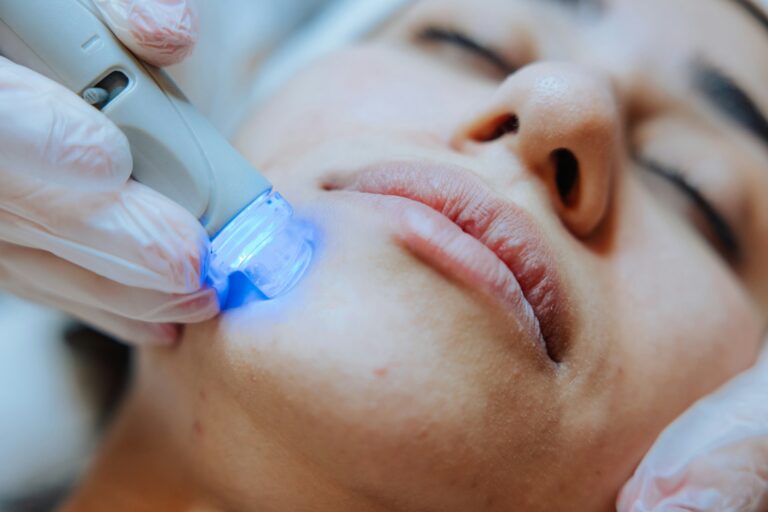August 16, 2024
Laser treatments have become a popular choice for achieving smooth and youthful skin. These treatments use focused light energy to target various skin concerns, from wrinkles and fine lines to uneven skin tone and pigmentation. By penetrating the skin’s surface, lasers stimulate collagen production and renew the skin, resulting in a fresher and more vibrant appearance.
One of the major advantages of laser treatments is their versatility. Different types of lasers can be used to address specific skin issues, such as acne scars, sun damage, and visible veins. The treatments are highly customizable, ensuring that each person receives the care that suits their unique skin type and concerns.
Another benefit is the precision offered by modern laser technology. Unlike traditional methods, laser treatments can target problem areas without affecting the surrounding skin. This precision means quicker recovery times and less discomfort. As a result, people can enjoy the benefits of smoother and more youthful skin with minimal downtime.
In the next sections, we will explore how laser treatments work, their benefits, and what you can expect during the procedure and recovery phase. Understanding these aspects can help you make an informed decision about incorporating laser treatments into your skincare routine.
How Laser Treatments Improve Skin
Mechanisms of laser treatments involve using concentrated light beams to target specific skin cells. These light beams penetrate the skin, encouraging the production of collagen and elastin, proteins essential for skin elasticity and strength. By promoting the regeneration of these proteins, lasers help repair damaged skin cells, leading to a smoother and more youthful appearance.
There are different types of laser treatments tailored to address specific skin issues. Ablative lasers, such as CO2 and Erbium lasers, remove the outer layers of damaged skin, which can be effective for treating deeper wrinkles and scars. Non-ablative lasers, like Nd:YAG and Alexandrite lasers, work beneath the skin’s surface, targeting deeper tissues without damaging the outer layer. These are often used for improving skin tone and reducing pigmentation.
Fractional lasers, another type of treatment, create micro-injuries in the skin, which helps stimulate a more robust healing response without affecting the entire surface. This technology allows for effective treatment with reduced recovery time compared to traditional methods. Understanding these mechanisms and types of laser treatments can help determine the best option for achieving smoother, healthier skin.
Top Benefits of Laser Treatments for Skin
One of the primary benefits of laser treatments is achieving a smoother skin texture. The stimulation of collagen production helps fill in fine lines and wrinkles, making the skin look and feel smoother. This transformation contributes significantly to a more youthful appearance and can boost self-confidence.
Laser treatments also excel at reducing wrinkles and fine lines. By removing or rejuvenating damaged skin layers, these treatments effectively diminish the appearance of facial lines. The precision of laser technology allows targeting even the smallest lines, providing a significant improvement over time.
Improving skin tone and pigmentation is another significant benefit. Lasers can target and break down pigmentation issues such as age spots and sun damage, leading to a more even skin tone. These treatments can also be effective in reducing redness and visible veins, further enhancing the skin’s overall appearance. Radiant and evenly toned skin is a hallmark of youthfulness, and laser treatments can help achieve this goal with lasting results.
Laser Treatments for Different Skin Issues
Treating acne scars and blemishes is one of the significant applications of laser treatments. Acne can leave behind deep scars and blemishes, making the skin appear uneven. Fractional lasers are particularly effective in treating these scars by targeting the damaged skin and promoting the growth of new, healthy tissue. This can significantly reduce the appearance of scars and result in a smoother skin texture.
Sun damage and age spots are common skin issues that can be addressed with laser treatments. Prolonged exposure to the sun can cause dark spots and uneven pigmentation. Laser treatments, such as intense pulsed light (IPL) therapy, can target these pigmented areas, breaking down the melanin and helping to even out the skin tone. This results in a more youthful and radiant complexion.
Reducing visible veins and redness is another benefit of laser treatments. Conditions like rosacea can cause chronic redness and visible veins on the skin. Vascular lasers, like the pulsed dye laser, can effectively target these blood vessels, reducing redness and improving the skin’s appearance. This leads to a clearer and more balanced complexion.
What to Expect During and After Laser Treatment
The treatment process for laser therapy is generally straightforward. During a session, a dermatologist will use a specialized laser device to target the specific areas of concern on your skin. The length of the session can vary based on the extent of the treatment, but most procedures last between 30 minutes to an hour. You might feel a slight tingling or warm sensation as the laser works on your skin.
Recovery and aftercare are crucial for achieving the best results. After the treatment, it’s common to experience some redness and swelling, similar to a mild sunburn. Your dermatologist will provide specific aftercare instructions, which may include applying soothing creams and avoiding sun exposure. Most people can resume their normal activities within a few days, but complete healing may take a couple of weeks.
Potential side effects and how to manage them should be considered before undergoing laser treatment. Common side effects include redness, swelling, and temporary changes in skin colour. In rare cases, blistering or infection may occur. It’s important to follow your dermatologist’s advice to minimize these risks and ensure a smooth recovery. If you experience any unusual symptoms, contact your healthcare provider immediately.
Conclusion
Laser treatments offer a range of benefits for achieving smooth and youthful skin. By targeting specific skin issues such as acne scars, sun damage, and visible veins, these treatments can significantly improve your skin’s appearance and texture. The precision and versatility of laser technology make it a valuable tool in dermatology, providing effective results with minimal downtime.
Understanding what to expect during and after laser treatment can help you prepare for the process and achieve the best possible outcomes. With proper care and the right expertise, laser treatments can be a game-changer for your skin health.
If you’re considering laser treatment, schedule a consultation with a skincare doctor at VIDA Dermatology. Our team of skilled professionals is here to help you find the best solution for your skin concerns. Achieve the youthful and radiant skin you desire with the expertise and care at VIDA Dermatology.



